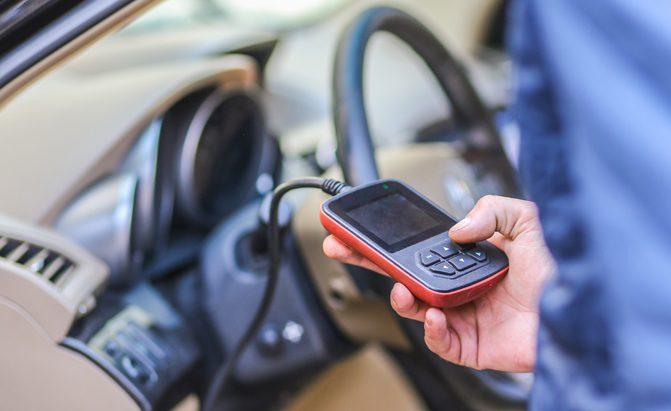An OBD2 or OBD-II is an onboard monitoring tool that reads and analyzes error codes. However, this tool does not produce any magic and tell you how to fix the problem. So, knowing how to use OBD2 scanner is necessary if you want to avoid visiting the mechanic’s shop every time the check engine light comes on.
The OBD2 (Onboard Diagnostic 2) is a standard system used in all types of vehicles. The software monitors the functions of the vehicle, regulates its overall health, and corrects minor anomalies in the ignition system ad fuel mixture. An OBD2 system collects data about plenty of components including the engine RPM, position of the crankshaft and camshaft, road speed, air temperature, and a few more. An OBD2 scanner is a tool that you need to analyze those specifics.
Contents
Different Types of OBD2 Scan Tools
You will find hundreds of models of OBD2 scan tools on the market, ranging from as cheap as less than $50 to more than $3,000. Some of them offer limited resources, collecting only a small amount of data, which some others have broader functions.
An OBD2 scanner is not compatible with all makes and models. Consult your vehicle’s manufacturer or the local auto dealer to find out the OBD2 system compatible with your car’s model. Purchasing a tool that is upgradeable and supports multiple car models would be a smart choice.

There are basically two types of scanners:
Code Readers
These are basic inexpensive tools that offer limited functions of clearing and reading codes. Due to a small-scale capability, it cannot access some data types and is unable to read some specific manufacturer codes.
Scan Tools
More expensive than code readers, these tools are equipped with extra features and functions. You can use them for reading manufacturer-specific codes, accessing registered and live data, and providing options for advanced troubleshooting.
Some people prefer a cheap scanner that they can discard when changing the vehicle. However, an expensive unit that can cover all the systems of your car is a smarter choice. Just make sure it has the option to upgrade, so you can use it with different car models.
SEE MORE
How to Use OBD2 Scanner
When you plug in a scanner, it does not give any magical solutions to the problems. In most cases, it won’t even tell the kind of issue the car is suffering from. What you will get are some codes that you can use to diagnose the problems.
This is how to use OBD2 scanner:
- Your car is supposed to have a port to plug into the OBD2 connector. In most vehicles, you will find it under the dashboard on the driver’s side. Put the connector into the slot.
- Switch the ignition key on to supply power to the scanner. Some units require the Vehicle Identification Number (VIN) for their operation. Enter the VIN if necessary.
- The tool has a ‘Scan’ button. Press it and follow the directions displayed on the screen. A complete scan does not take more than a few seconds. After that, check if the screen shows any error codes or not. If yes, record the data.
Using an OBD2 scan tool is a straightforward process. Remember to read the user manual before starting the process. It will make the task much easier.
What to Do after Having the Error Codes?
You know how to use OBD2 scanner, but what to do with these codes? Well, if the code is a one-time issue, you can use the tool to clear it and reset the check engine light at the same time. But if the problem is still there, you have to analyze the code and find ways to fix the issue.

Search the error code on the Internet to understand what kind of trouble it refers to. If the code is P0401, for example, an Internet search will tell you that the heater circuits of your car’s oxygen sensors are faulty. It does not reveal the exact problems of those circuits, but now you know where to look into.
There are some advanced scanners that not only show the codes but also the trouble they are referring to. Some units even offer troubleshooting options like telling you about the parts that need to be replaced or repaired.
You can use the OBD2 scan tool to find out what’s wrong with your vehicle and how to solve that issue. When you take the vehicle to a repair shop, the mechanics there will run exactly the same diagnosis. Even if you don’t have the skill to repair the car with this information, you can at least tell whether the mechanic’s assessment is right or wrong.



